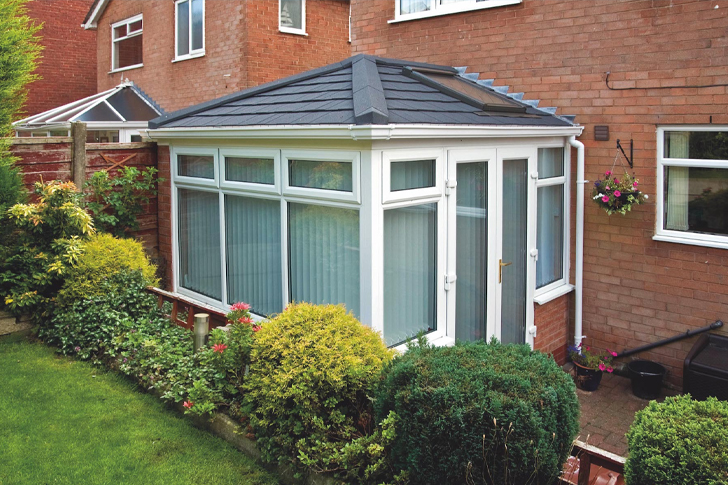How to Choose an Insulated Conservatory Roof
A conservatory is a delightful addition to any home, offering a space where the boundary between house and garden blurs. However, anyone who owns one knows they can be uncomfortably hot in summer and bitterly cold in winter. This is where an insulated conservatory roof can transform your space into a comfortable room, usable all year round. This article aims to guide you through the process of selecting an insulated conservatory roof, ensuring you make an informed decision that enhances your home’s functionality and value.

Understanding the Basics of Conservatory Roof Insulation
A conservatory’s thermal performance is heavily influenced by its roof, which is typically made of glass or polycarbonate. Although aesthetically pleasing, these materials are not always efficient at regulating temperature. Insulated conservatory roofs come in several forms, including solid roofs, glass roofs with improved thermal efficiency, and hybrid systems which combine glass and solid panels. Investing in roof insulation means enhancing energy efficiency in your home. Reports from the Energy Saving Trust highlight that solid or tiled conservatory roofs can significantly enhance energy conservation, reducing heat loss by over 90% compared to a standard glass or polycarbonate roof.
Evaluating Material Options
The choice of material for your insulated conservatory roof impacts both its aesthetic appeal and its thermal properties. Each has its advantages and drawbacks:
Polycarbonate: Lightweight and cheaper, polycarbonate is an accessible option but offers lesser insulation compared to others. New technological advancements have improved its thermal performance, but it still lags behind more solid materials.
High-Performance Glass: Modern glass roofs can come equipped with treatments that reflect UV rays and retain heat. Such enhancements significantly boost the glass’s insulating power, though these options can be costly.
Solid Roofs: Usually made from tiles or solid panels, these roofs are excellent for insulation. They can blend seamlessly with the existing architecture of a home, ensuring there is no aesthetic clash. While they are the most effective at maintaining an even temperature, they also block out natural light, which might be a dealbreaker for some.
Choosing the Right Roof System
Once you have a grasp on the materials available, you should consider the specific roof system that will suit your conservatory. The decision largely depends on your existing structure and your climate control needs:
Replacement or Retrofit: Decide whether to retrofit your current conservatory with a new roof system or completely replace it. Retrofitting is often cheaper and involves installing a new roofing layer over the existing one. In contrast, replacement is a more comprehensive approach that could provide better insulation but at a higher cost.
Complete Solid Roof: If your priority is maximizing energy efficiency, a complete solid roof may be the best option. Be aware that this can change the internal feel of your conservatory, making it more like a standard room.
Hybrid Roofs: Hybrid roofs, which combine solid and glass panels, provide a balance by offering better insulation than full glass while still letting in some natural light. They can be tailored to reflect your specific preferences for light and insulation.
Consider Aesthetic Impact
Your roof choice will significantly influence the external appearance of your conservatory and, by extension, your entire home. This might affect your property’s curb appeal and value. Relatively new conservatories might benefit more from modern, high-performance glass that doesn’t dramatically alter the building’s character. On the other hand, older or more traditional homes might better suit tiled roofs, which can be matched with the existing roof style, enhancing the property’s uniformity and appeal.
Regulatory and Practical Considerations
Before making any decisions, assess the zoning and building regulations in your area. Some modifications can require planning permission, especially if they alter the structure and appearance of your home significantly. Furthermore, assess the load-bearing capacity of the existing conservatory structure. Heavy materials like tiles might require additional support, which can add to your project costs.
Cost Versus Benefit
The expense of installing an insulated conservatory roof varies depending on the materials and the complexity of the installation. According to building industry data, prices can range between $4,000 and $20,000. However, the potential energy savings should also be considered. Insulating a conservatory roof properly can reduce heat loss drastically, which in turn reduces heating costs during colder months. Over time, these savings can offset the initial expenditure.
Longevity and Maintenance
Finally, consider the longevity and maintenance demands of your chosen roofing material. High-performance glass and solid roofs usually offer greater durability and lower maintenance requirements compared to polycarbonate. Ensuring that your insulated roof is constructed from high-quality materials and installed by professionals can guarantee its effectiveness and durability, providing value for a longer period.
Making the switch to an insulated conservatory roof requires careful consideration of several factors, including material types, insulation needs, aesthetic impact, and cost. By making a well-informed choice, you can transform your conservatory into a comfortable, energy-efficient space that enhances your home’s value and aesthetic for years to come.







Recent Comments